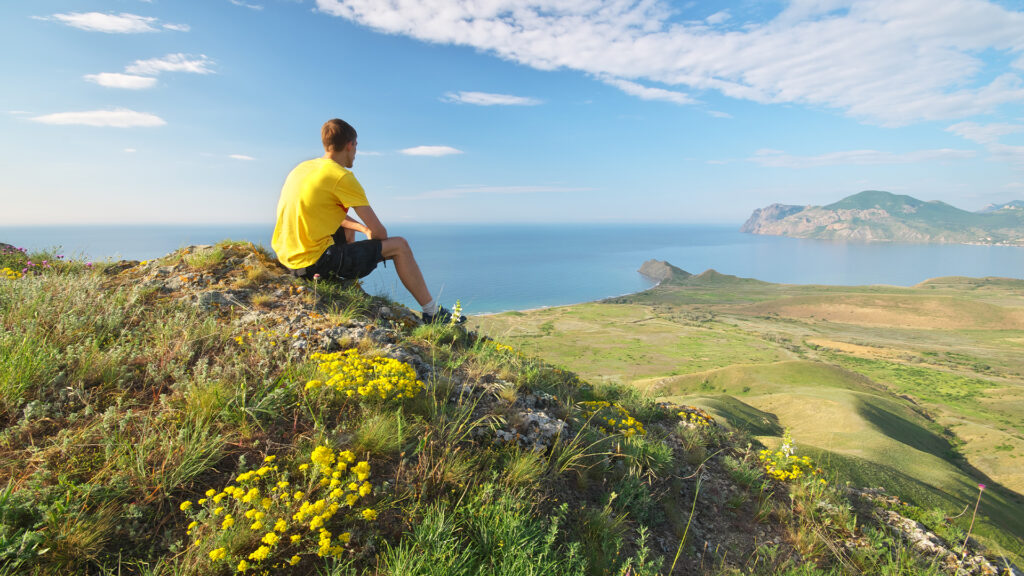Just when you thought it couldn’t get worse, it feels like the bottom has fallen out from beneath us. Again. And again. And again. When will it end?
The last several months have been a seemingly unremitting series of surprises, loss and grief, and what feels like seismic changes in our way of life and thinking.
For me, this comes on the tail end of a series of personal and professional seismic shifts, and recent events are heaping more grief and disruptive change on top of what has already felt like a life turned upside down. In 2.5 years, I’ve lost my sister, my husband, my father, other loved ones (in spirit, not in body), gave up my career, home, and my sense of financial security. Even at the beginning of what turned out to be a series of losses, I realized I needed to lean into post-traumatic growth, and I’m so glad I did.
Post-traumatic growth, as the name implies, means harvesting learning, growth, and expansion from trauma, grief, and loss. It means choosing gratitude, perspective, inspiration, and adaptation to fill the void left when your life comes crumbling down.
In some cases, the loss is a tangible and outward, such as the loss of a loved one or a job. In some cases, the loss is related more to something internal, such as a sense of identity or the loss of illusion. The pandemic stole our sense of independence, safety, comfort, and autonomy. It took away some really tangible things like our health, our jobs, or even some of our loved ones.
The events precipitating the race demonstrations destroyed the illusion that we’re living in a society that embodies the democratic principles of freedom and justice. We finally begin to viscerally recognize that our economic prosperity was founded on the blood of people taken from their country against their will. And worse yet, for centuries we’ve done nothing to try to remedy this psychological scar that causes us to continue to perpetuate harm against the people we have exploited and abused.
And that’s just the tip of the injustice iceberg.
In last weeks’ blog, I wrote about the human tendency to “other-ize” people and Earth to self-justify our mistreatment of them. When we fail to choose compassion and kindness, we then justify and blame the victim after the fact, in this case oppressed or marginalized people or the environment. According to the Arbinger.com, we sense this self-betrayal on an unconscious level and we double-down on blaming, ignoring, or exploiting those we harmed. The work for us now is to reckon with our self-betrayal and heal that within us.
There is no denying that this is gut-wrenching work. But failing to do the work leads to an escalation of conflict and self-destruction as we dig deeper into defending what is indefensible behavior and beliefs. In so doing, we further traumatize ourselves and those around us, including our non-human planet-mates.
According to the Arbinger Institute, we all create harm without realizing it. Focusing on how others are creating the harm instead of dealing with our own contribution is just another way we can avoid responsibility for how we, too, cause problems for others. To heal, we must recognize and hold ourselves accountable, then find ways to provide compassionate service to others.
Using the pandemic pause to be explore the ways we create problems for other people and for Earth is our challenge, and our solution. This is hard and scary work. To do this work, I have to be willing to put my ego and sense of righteousness aside and really be open to listening and seeing how I am perpetuating the problem. In what way am I not considering the needs, wants, and desires of others and of Earth? How can I listen and observe more effectively, and use the platinum rule and to do unto them in the manner in which they need? When I strive to understand their perspective, how can compassion and kindness be used to create dialogue and solutions? In what ways is there a grain of truth to their viewpoint, and in what ways is there a grain of a lie in mine?
We are seeing examples of this courageous work during the demonstrations. People reaching across the proverbial aisle, uniting hands and hearts, and celebrating our shared hopes for connection, peace and love. Such actions embody the embrace of the humanity of others, and reject the notion of the binary – that there is only my way, or the highway. While we embrace other-ism, hate, and blame, such bridges of love and connection are inconceivable.
The more devastating the circumstances (the yin), the more hopeful the solutions (the yang). Loss and generativity are in a yin/yang dance, one impossible without the other. Even in good times, there is a shadow side; in this case, the psychic wounds underlying our false sense of peace, justice, and equal opportunity.
I am grateful that recent events are illuminating the cracks in our societal foundation. I am also hopeful that the void left by the destruction of our false identity of peace and justice is shining a light on what we must do going forward. From this trauma will arise growth, learning, love, and light. We are a resilient nation. We will come together with Earth and create the future that our Founding Fathers have dreamed of for us, all of us.
There is much work to do and we need everyone to participate. There is no such thing as a perfect approach, and we’re not going to all agree on the path or process. But we’re a melting pot, and in that emulsion we will once again find the magic that will set us on the right course once again.
